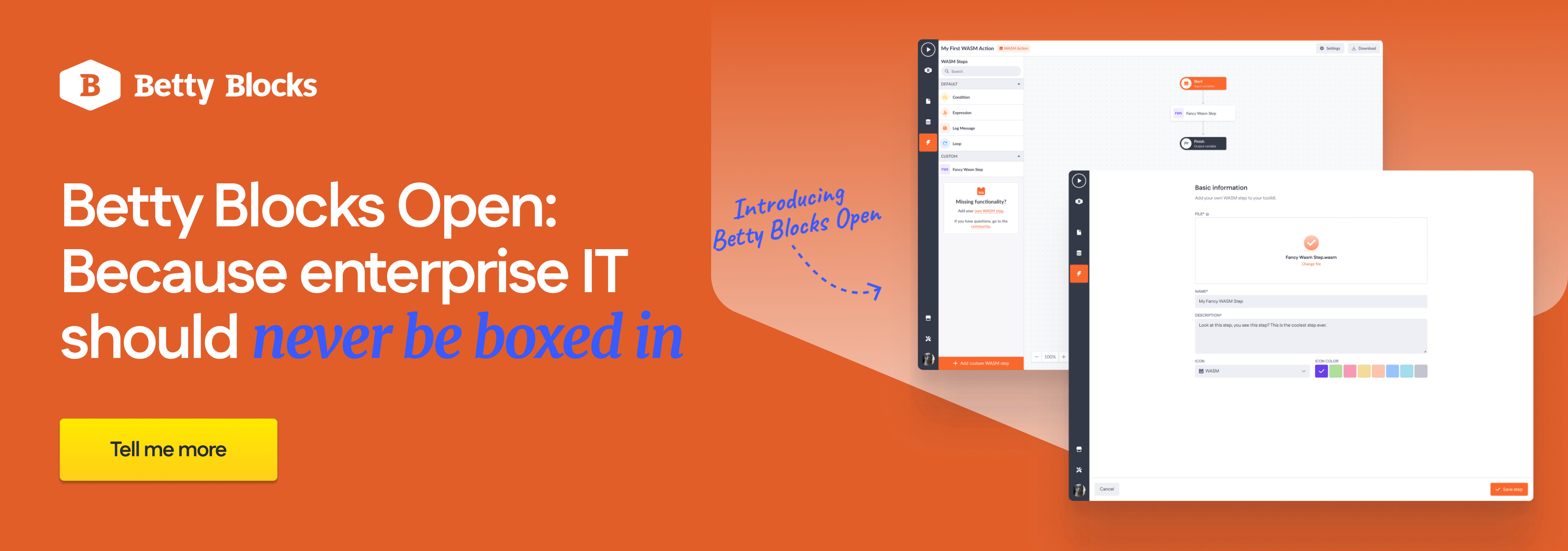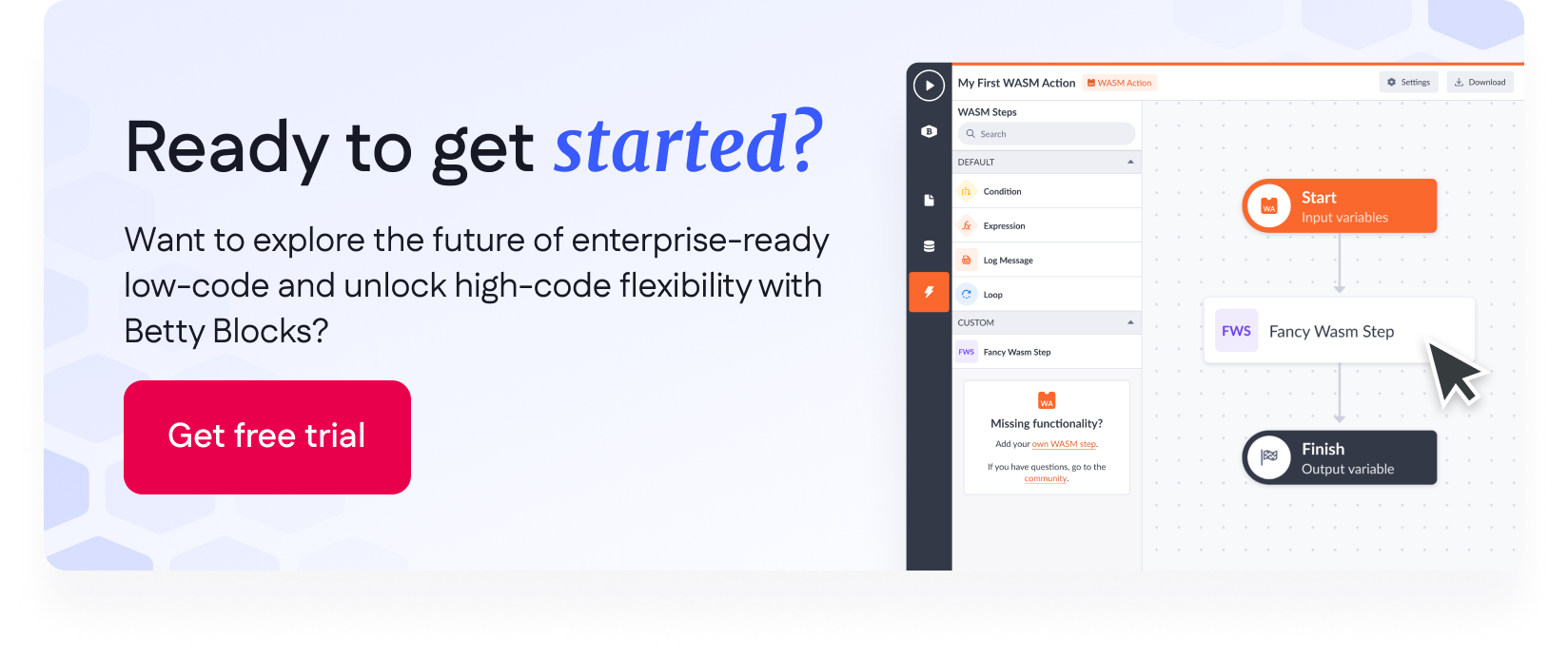For many enterprises, low-code platforms promise speed, agility, and accessibility. But for high-code developers, the reality often feels more limiting than liberating. Most low-code tools lock you in to a single scripting language (often JavaScript) and restrict how deeply you can customize or optimize your logic. As a result, business-critical functionality remains siloed in high-code systems.
At Betty Blocks, we believe low-code should empower every developer, not constrain them. That’s why we built the Wasm-based action builder: to bridge the gap between the flexibility high-code developers expect and the efficiency low-code teams need.
The problem: When “low-code” means “low control”
High-code developers are used to freedom, choosing their own tools, frameworks, and languages to deliver performant, scalable solutions. But most low-code environments only allow customization through proprietary scripting or JavaScript, limiting what developers can achieve.
This creates friction:- Advanced logic is forced outside the low-code platform, increasing complexity.
- Teams lose time managing integrations between separate systems, which are usually pretty complex to build.
- Often developers hesitate to engage with low-code projects because they feel locked-in.
In short: low-code becomes a bottleneck, not an accelerator.

The solution: High-code flexibility inside a low-code platform
The Wasm-based action builder changes everything. By bringing WebAssembly (Wasm) into the Betty Blocks platform, high-code developers can now build reusable components in any Wasm-supported language — such as Rust, C#, Python, Typescript or Go.
Once imported into Betty Blocks, these components appear as visual building blocks that low-code developers can drag, drop, and configure without writing code. It’s a shared development space where everyone contributes at their own level of expertise.
Here’s how it works in practice:
- Developers build high-performance Wasm components in their preferred language.
- The components are uploaded into Betty Blocks as reusable actions.
- Low-code builders integrate and orchestrate those actions visually to deliver business solutions fast.
The result? No more silos between coding disciplines, just one collaborative workflow where both types of developers thrive.
Why it matters for enterprises
For organizations under pressure to deliver faster while maintaining standards, this flexibility is a game-changer. The Wasm-based action builder:- Removes language barriers: use the tools and knowledge your team already has.
- Empowers collaboration: high-code and low-code teams work in the same governed environment.
- Improves quality and performance: by letting developers optimize performance-critical logic natively.
- Speeds up delivery: low-code developers can reuse high-code components instantly.
- Expands the possibilities: by supporting more programming languages and complex logic, enterprises can now tackle a wider range of use cases and build more advanced, tailored solutions within the platform.
By expanding language support, enterprises no longer have to choose between speed and technical depth. You get both.
Ready to experience it?
The Wasm-based action builder is now available. If you’re ready to bring your favorite programming languages into Betty Blocks, sign up for the trial.
A more open future for low-code
The Wasm-based action builder isn’t just a new feature, it’s a step toward a more open, collaborative, and flexible development model. It redefines what low-code can be: a platform where flexibility and control coexist.
At Betty Blocks, our mission is to eliminate the trade-offs that hold enterprise innovation back. With WebAssembly, we’re giving developers the freedom to build how they want their business logic and empowering every team to move faster, together.

